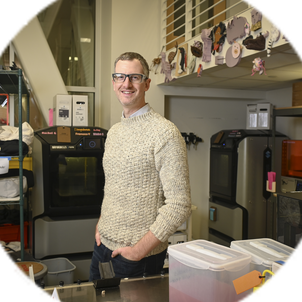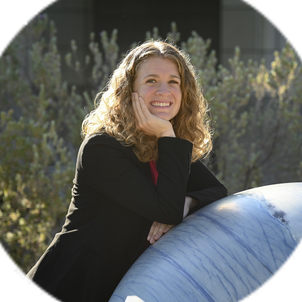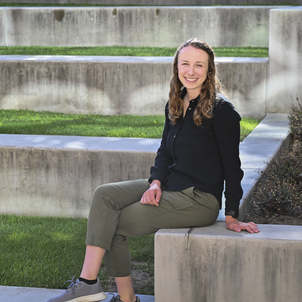Once I got to high school I decided I wanted to be a pilot. But, when I ended up doing really well in math, physics, and all the science-y subjects, my cousin was like, “You could be a pilot, but have you also considered making these planes?” That’s how I discovered engineering.
I knew that if I were to pursue this goal, I’d have to leave my country because there aren’t schools that teach aerospace engineering where I’m from. That’s how I ended up at Saint Louis University for my bachelor’s and now here at Stanford, where I’m currently in my second year of my master’s in Aeronautics and Astronautics. Initially, I didn’t know that aerospace had two sides. There’s an aeronautics side, which is planes, and then astronautics, which deals with rockets and satellites. I remember learning about remote sensing – being able to monitor volcanoes or weather phenomena using satellites – in a geography class and that’s when my thinking shifted from “planes are pretty cool” to “satellites also sound like they can do a lot of good.”
I grew up in a country that needs to improve aspects of its environmental monitoring and I saw satellite technology as a pathway to do that. In the U.S., we have forecasts alerting you to incoming floods, but in Zimbabwe, there’s a lack of resources to predict, prepare, and monitor natural disasters, so people don’t have the same access to helpful information. I remember the devastation after a tropical cyclone hit in 2019 and lives were lost because the environmental management agency failed to anticipate the cyclone’s strength due to the absence of that disaster forecasting. I always knew I wanted to contribute to Zimbabwe’s disaster readiness, but it took me coming to America to figure out how I was going to make that happen. I found my passion here.
I’m here on a full ride, which is major for me because after high school, I had to take two gap years because my parents couldn’t afford to put me through university. I’m on a departmental scholarship that comes in the form of a five-quarter course assistantship. Through that, I work as a course assistant instructing undergraduate classes on dynamics, systems engineering, and space flight and sustainability. Teaching is fun, and I’ve also noticed it’s helped me grow my people skills, like communication and public speaking.
Grad school can be tough so I’m always looking out for ways to keep sane and find peace. For me, libraries are sanctuaries, and luckily, Stanford has tons. My favorite right now is the Bowes Art & Architecture Library. I like to study in dead silence and it’s also just calming to be in there. I’m also part of ROOTED, a program launched by Black therapists at Stanford’s Counseling and Psychological Services, that offers a safe space for Black graduate students like me to connect and share their experiences. I realized carving out space for peace and connection on campus is an important part of sustaining my longevity in the industry.
I’m passionate about my own career but also about increasing visibility and participation of individuals from underrepresented racial and gender backgrounds in the aerospace industry. I was awarded a Brooke Owens Fellowship – a fellowship dedicated to supporting women and gender minorities who are interested in space – at the end of undergrad and they’ve really helped me get my foot in the door. Through the fellowship, I was able to intern at Loft Orbital in San Francisco, then through that internship, I was able to connect to somebody who was at Muon Space, where I interned this summer. It’s a lifetime commitment to network with and support other women and gender minorities who are also in the industry. The fellows have a huge Slack channel where we talk about how to get fairly compensated, how to negotiate your salary, workplace diversity and inclusion initiatives, and grad school advice. I want to see so many more of us here. I hope my story inspires another girl like me who may not even realize she’d be interested in engineering.
Related spotlights

Dan Somen

Sonia Martin


